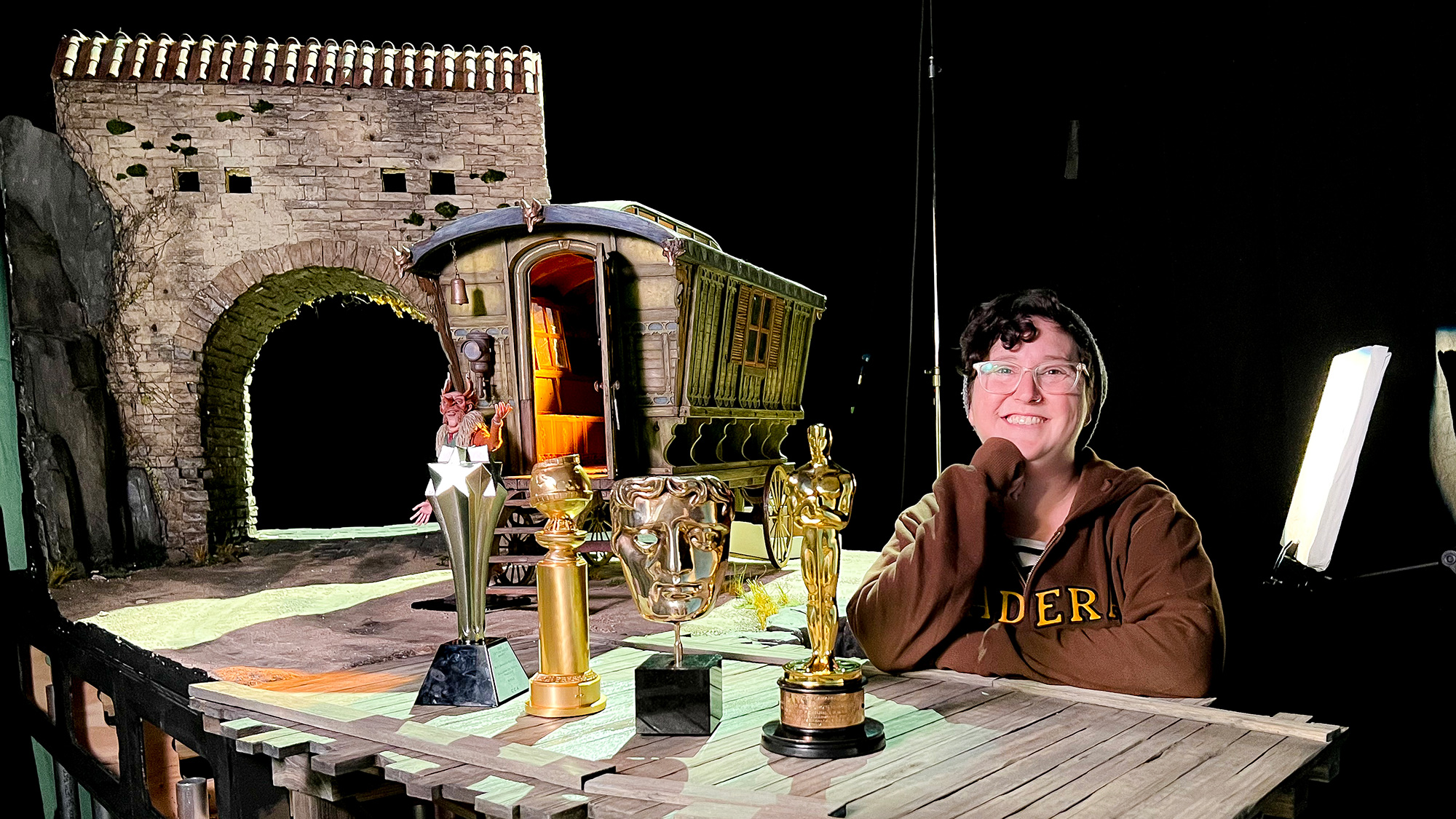Former CSUMB student part of Oscar-winning 'Pinocchio' animation team

Jess Lowe with (from left) Critics Choice, Golden Globe, BAFTA, and Oscar awards on a set piece from "Guillermo del Toro's Pinocchio."
March 27, 2023
By Adrienn Mendonça-Jones
Former CSUMB student Jessica “Jess” Lowe is engaged in an animation style that is far different from the popular computer-generated images filmgoers have become used to in recent decades. And her work has paid off with one of the highest accolades cinema has to offer.
Lowe was part of a stop-motion animation team that worked on “Guillermo del Toro's Pinocchio.” The film won the Oscar for Best Animated Feature Film in March.
“I didn’t go to the Oscar Awards, but we did have a studio watch party,” said Lowe, who lives in Portland, Oregon. “A hush fell over the crowd as we watched.”
When their film was announced as the winner, Lowe said “you could hear us cheering from blocks away.”
She had spent a year with Madera Industrial Services, part of ShadowMachine NW studio, which helped realize del Toro’s vision for "Pinocchio." Lowe started as the film’s animation second assistant and was later promoted to animation technical coordinator.
It’s work that requires patience. The 100-year-old tradition of stop-motion animation is a meticulous technique where models and sets are all created—and moved—by hand. Played back at speed, individual frames become magically imbued with motion.
This is world-building on an epic scale. With 24 frames per second of film, and “Pinocchio’s” runtime of almost two hours, that’s almost 172,800 frames.
At CSUMB, Lowe was an earth systems and science policy major, with a focus on education. But one day, in her dorm building, she heard the sound of power tools coming from the common room. She asked the students who were using them about it and was told they were building a stop-motion set.
“And being who I am,” Lowe said, “I was like, ‘It looks like you need this to be more stable. Why don't you add some braces right here, and that'll help lock it down.’ And with that interaction, a career and lifelong friendships were born.”
Lowe eventually began to work with her partner Rachel Kenny Lowe (who was a cinematic arts major at CSUMB) on the stop-motion animation capstone film “The Sniffer” for over a year. They built a 14x14-foot modular set in the garage of their East Campus apartment, then re-assembled and filmed it on the Cinematic Arts and Technology soundstage.
“Jess and the other students did a lot of experimentation and tested their workflows and processes,” said Chris Carpenter, a media production specialist and lecturer with Cinematic Arts and Technology.
Carpenter remembers Lowe serving on several senior capstone and stop-motion sets: “She was always in our studio and attending student events.”
Jess and Rachel later moved to Portland, where Jess worked with Laika Entertainment on films including “ParaNorman,” “Boxtrolls,” and “Kubo and the Two Strings.”
Jess Lowe helped Laika develop a three-dimensional printing process called “rapid prototyping,” which allowed the studio to interchange facial elements such as mouths, eyes and ears, thereby increasing the range of emotions and expressions for film characters. That earned the Laika team a technical Academy Award.
On “Guillermo del Toro’s Pinocchio,” Lowe created a blueprint for animators in the form of a frame-by-frame schedule. She listened to the audio for each shot and broke it down into phonetics per frame.
“That way the animators know, ‘This is what sound happens on frame five. This is what sound happens on frame 10,’” she said.
In addition to the Best Animated Feature Film Oscar, “Guillermo del Toro’s Pinocchio” also won BAFTA, Critics Choice and Golden Globe awards, nine Annie's (an animation industry award) and three Visual Effects Society awards.
“I feel excited for Jess,” said Carpenter. “She is an amazing and talented artist and a wonderful example for our students to look up to. I know she’ll go as far as she wants to go in her career.”